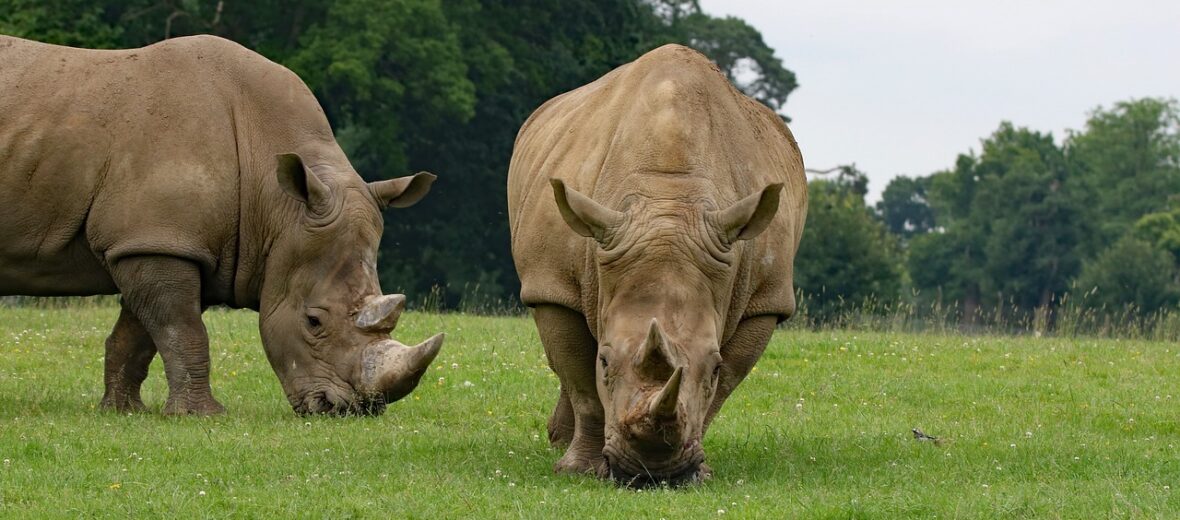
In the 20th century, populations of the black rhinoceros declined exponentially, due to over-hunting and poaching for their horns. There were 8 subspecies of black rhino. 4 are now extinct and only 3 – the eastern, south-western, and south-central – still have viable populations; capable of bringing their numbers back successfully. Sadly, the Western black rhino went extinct in 2011. Between 1970 – 1992, their populations dropped by a staggering 96%! Thanks to conservation efforts their populations are starting to recover, but these amazing beasts are still listed as Critically Endangered by the IUCN. That’s 1 step away from extinct, in the wild!
First the Stats…
Scientific name: Diceros bicornis
Weight: Up to 3,100 lbs.
Length: Up to 12 feet
Height: Up to 5.9 feet, at the shoulder
Lifespan: Up to 50 years
Now on to the Facts!
1.) Black rhinos have 2 and sometimes even 3 horns, which grow throughout their life. Just like human fingernails. In fact, rhino horns are made of keratin, which is what our fingernails and hair are made of.
2.) They are also known as hook-lipped rhinos due to their prehensile upper lip, which is used to strip leaves from bushes.
3.) One of the ways you can tell the difference between a white rhinoceros and black rhinoceros is that the black rhino has a prehensile, pointed upper lip. White rhinos have a square lip.
4.) Male black rhinos have the highest known combat-related death rate of any mammal in the world. Up to 50% meet their death in battles over breeding rights and territorial disputes!
5.) Males are called bulls, females are called cows, and babies are called calves.
But wait, there’s more on the black rhino!
6.) In general, rhinos have poor eyesight and are typically unable to see movement at only 90 feet away. But they have an excellent sense of smell and good hearing too.
7.) Black rhinos can make a variety of sounds to communicate. They are capable of making snorts, growls, trumpet calls, sneezes, and a wonk-like call. They also communicate via urine marking, feces (poop), and body language.
Did you know…?
The longest black rhino horn on record measured 51 inches. That’s 4.25 feet long!
8.) A charging black rhinoceros can reach speeds of up to 35 mph!
9.) Like all rhinos, they love mud baths. They use mud to cool down and to keep insects and parasites off them.
10.) They may look clumsy but they can turn on a dime and even strike a tennis ball from the air, with their horn, when one is tossed to them.
But wait, there’s still more on the black rhino!
11.) Females give birth to a single calf every 2.5 – 3 years.
12.) Female black rhinos are pregnant for up to 16 months!
Did you know…?
Even though their names are different, the black and white rhinos are not actually black or white, they’re both grey.
13.) The ancestor of the rhinoceros was called the woolly rhino. They lived over 50 million years ago.
14.) A calf will stay with their mother till they are up to 3 years old.
15.) Black rhinos eat grasses and leaves, making them strict herbivores.
Now a Short Black Rhinoceros Video!
Also, check out the Critter Science YouTube channel. Videos added frequently!
Want to suggest a critter for me to write about? Let me know here.



